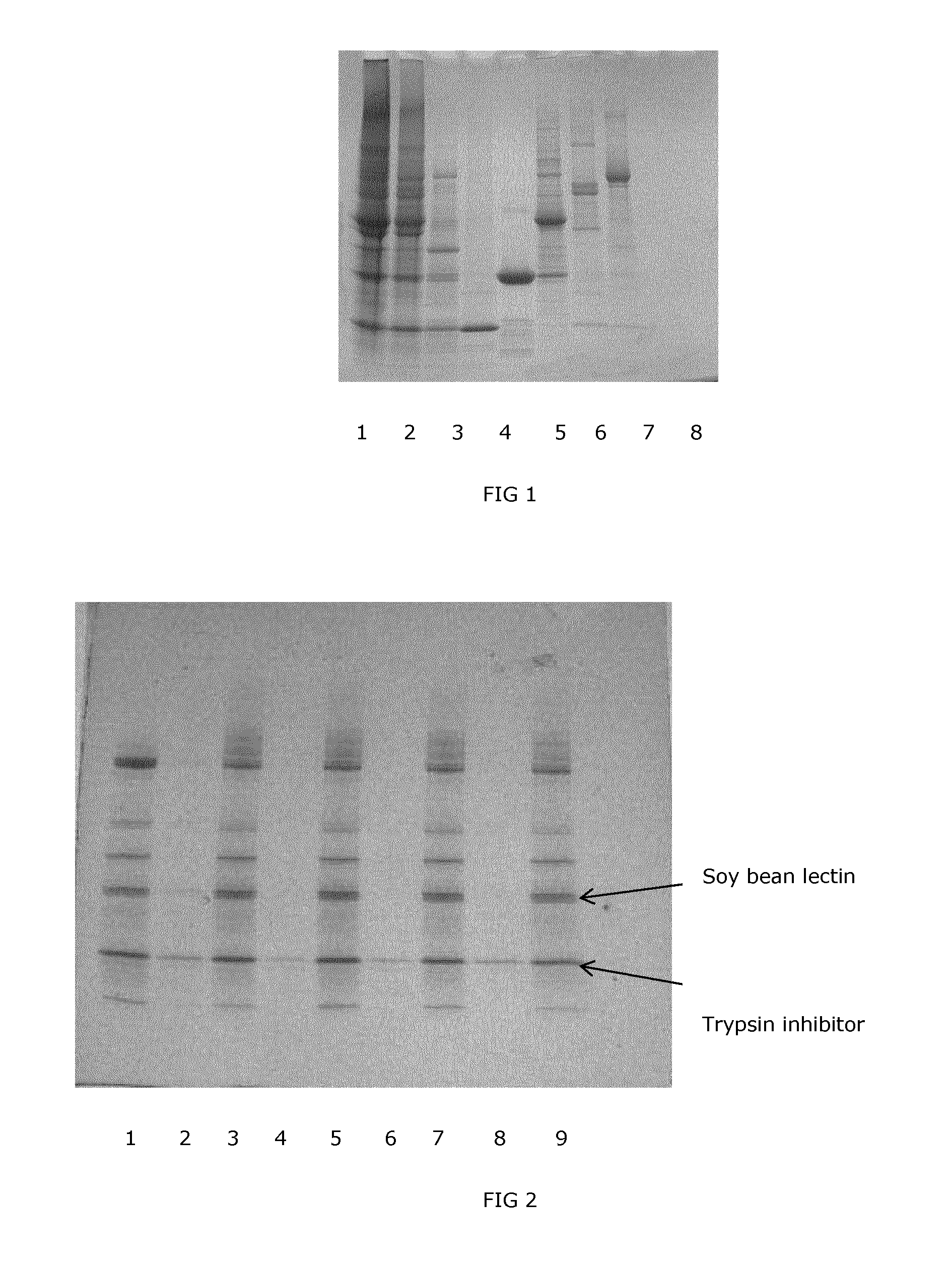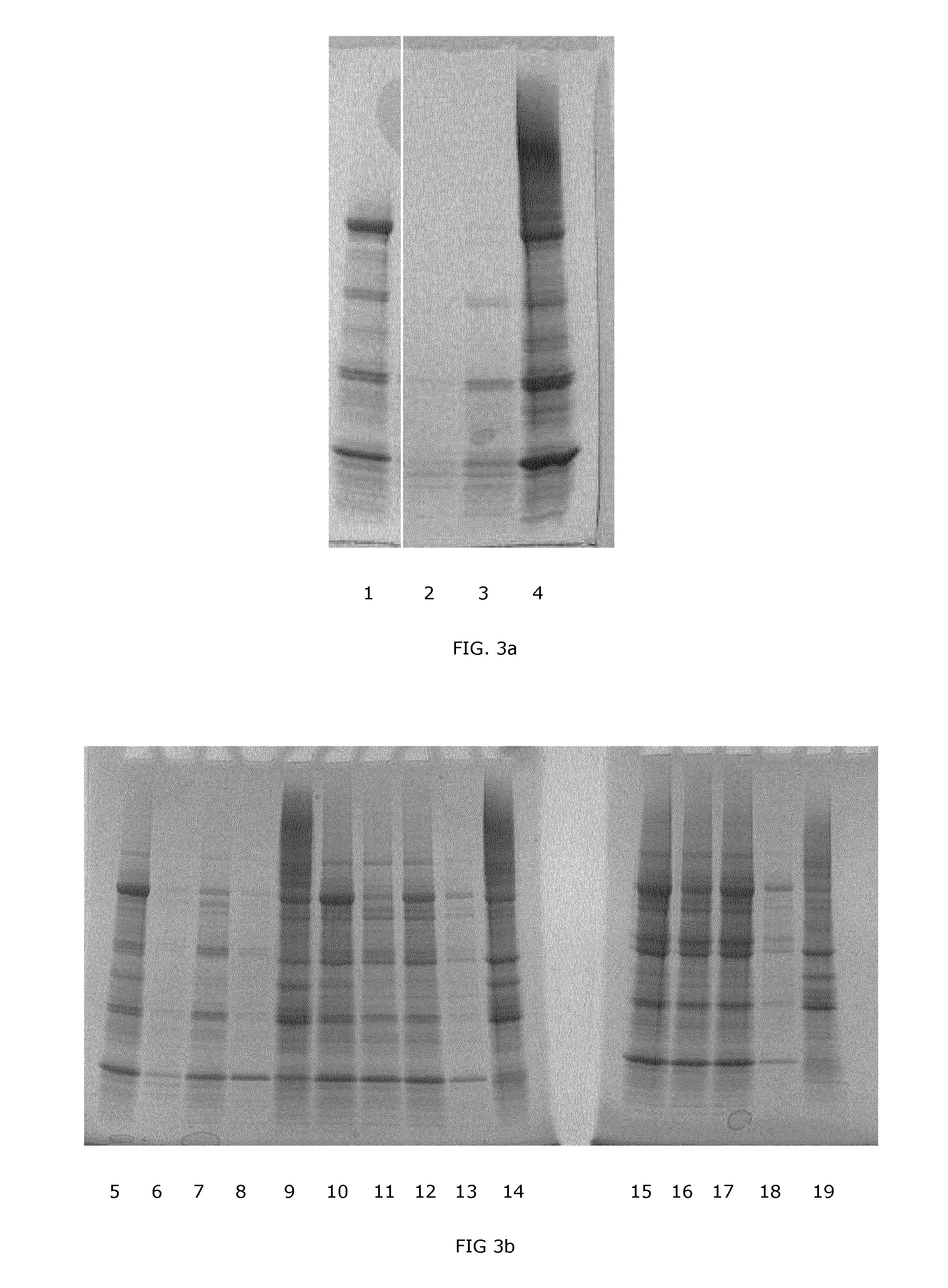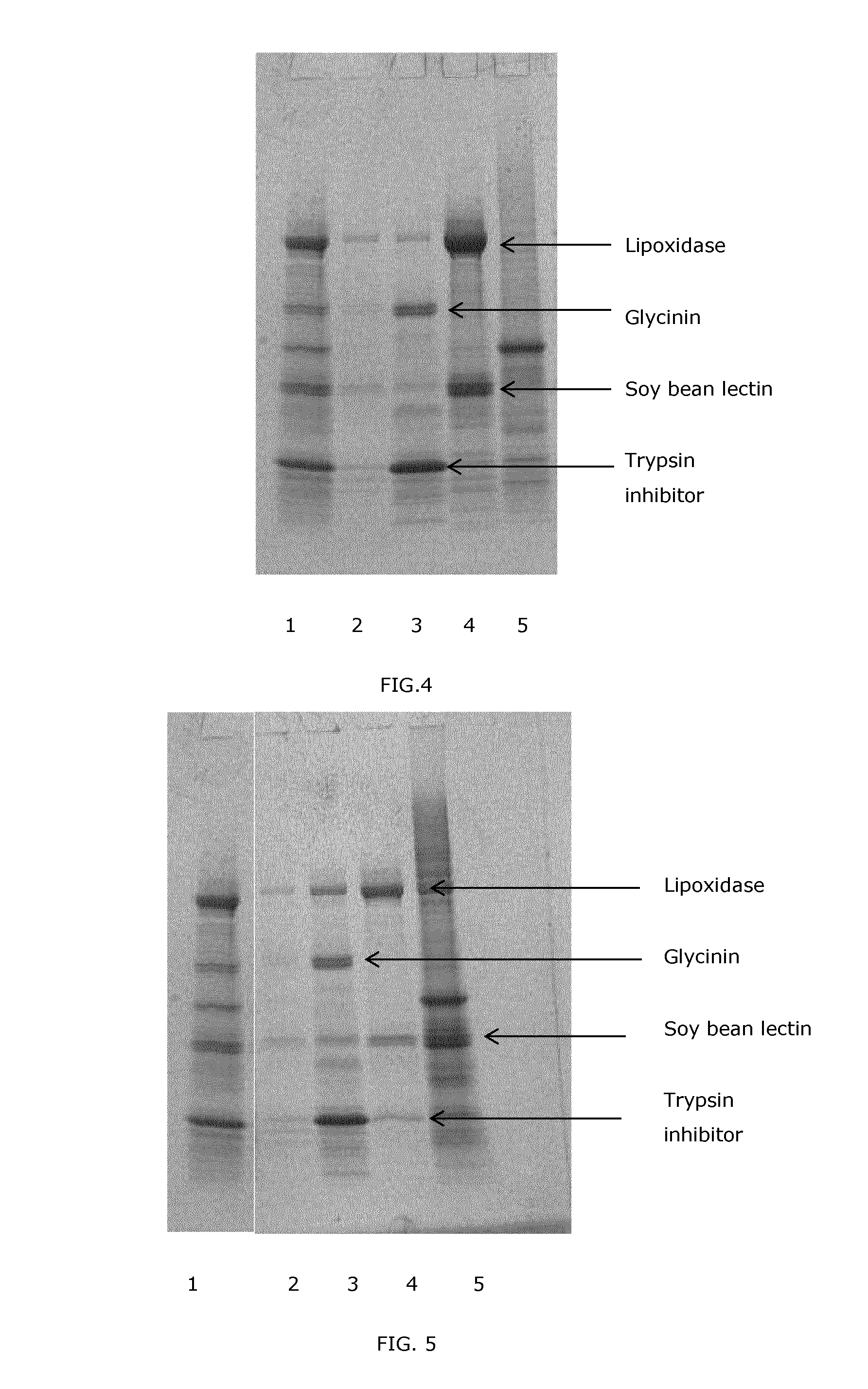Separation processes for soy protein
a technology of soy protein and separation process, which is applied in the direction of other chemical processes, protein composition from vegetable seeds, peptide sources, etc., can solve the problems of malnutrition and disease, individual proteins or enriched fractions thereof are not widely available at competitive costs, and other proteins in the soy protein are destroyed or denatured
- Summary
- Abstract
- Description
- Claims
- Application Information
AI Technical Summary
Benefits of technology
Problems solved by technology
Method used
Image
Examples
embodiment 1
[0121]A process for the separation of soy protein, said process comprising the steps of:[0122]i. providing an aqueous extract of soy protein or a solution of soy protein, said extract or solution of soy protein comprising at least two types of soy proteins;[0123]ii. passing said aqueous extract or solution of soy protein through at least one expanded bed absorption process, wherein said expanded bed absorption process comprises contacting said aqueous extract or solution of soy protein with at least one adsorbent resin which selectively adsorbs at least a first type of soy protein to provide a non-bound protein fraction and a bound protein fraction, said adsorbent resin comprising:[0124]at least one ligand (L1), said at least one ligand (L1) comprising an aromatic or heteroaromatic ring system and one or more acidic groups, or[0125]at least one ligand (L2), said at least one ligand (L2) comprising an alkylamine or alkylarylamine, wherein said alkylamine or alkylarylamine moieties in...
embodiment 2
[0131]The process according to any one of the preceding embodiments, wherein the second type of soy protein remains adsorbed onto said resin while said first type of soy protein is eluted from said adsorbent resin.
embodiment 3
[0132]The process according to any one of the preceding embodiments, wherein first and second types of soy protein are initially both adsorbed onto said adsorbent resin, and said first type of soy protein is then eluted from said adsorbent resin.
PUM
| Property | Measurement | Unit |
|---|---|---|
| pH | aaaaa | aaaaa |
| molecular weight | aaaaa | aaaaa |
| molecular weight | aaaaa | aaaaa |
Abstract
Description
Claims
Application Information
 Login to View More
Login to View More - R&D
- Intellectual Property
- Life Sciences
- Materials
- Tech Scout
- Unparalleled Data Quality
- Higher Quality Content
- 60% Fewer Hallucinations
Browse by: Latest US Patents, China's latest patents, Technical Efficacy Thesaurus, Application Domain, Technology Topic, Popular Technical Reports.
© 2025 PatSnap. All rights reserved.Legal|Privacy policy|Modern Slavery Act Transparency Statement|Sitemap|About US| Contact US: help@patsnap.com



